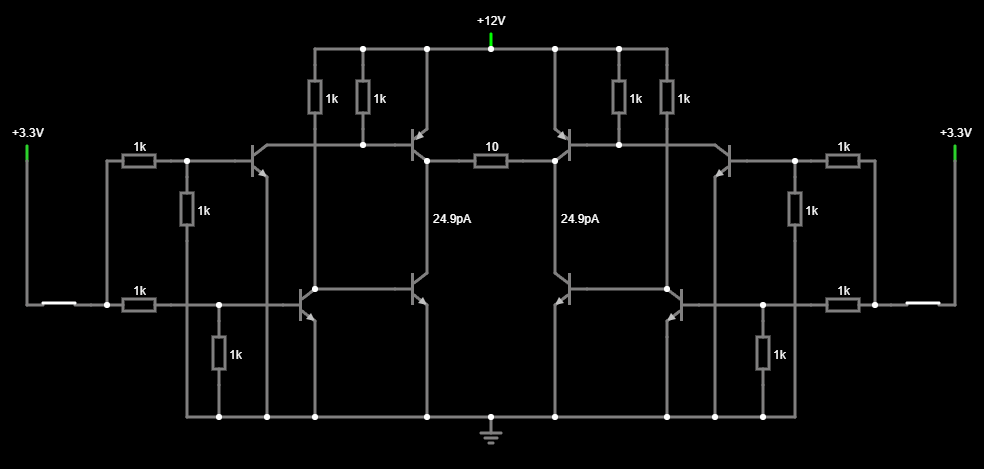I want to design a low power H-bridge on bipolar transistors. I've already made one, built the board and tested it. Generally works, but there are difficulties with control and sometimes I have a short circuit in the power supply.Here is the first version I made:

Now I found another scheme, and I plan to use it: H-Bridge Transistor Smoking (Bipolar BJT Transistor)
I changed my design a bit based on the post above:
 I combined the control inputs in pairs. Thus, the upper and lower transistors cannot be opened at the same time. Although I'm sure it will work, but what would you say to this? My control inputs may not be connected anywhere and catch interference. Therefore, I added two pull-up resistors to ground, so that at least the bottom transistors are closed and there is no short circuit. The upper transistors will be open all the time. What do you think of my design? Maybe they would give some advice. Thank you
I combined the control inputs in pairs. Thus, the upper and lower transistors cannot be opened at the same time. Although I'm sure it will work, but what would you say to this? My control inputs may not be connected anywhere and catch interference. Therefore, I added two pull-up resistors to ground, so that at least the bottom transistors are closed and there is no short circuit. The upper transistors will be open all the time. What do you think of my design? Maybe they would give some advice. Thank you
I changed my previous design a bit, should be correct.

And what about such a scheme? Instead of mosfet transistors, I use bipolar ones. I want to find a circuit that will not have dangerous input combinations and will not react to unconnected control inputs.



